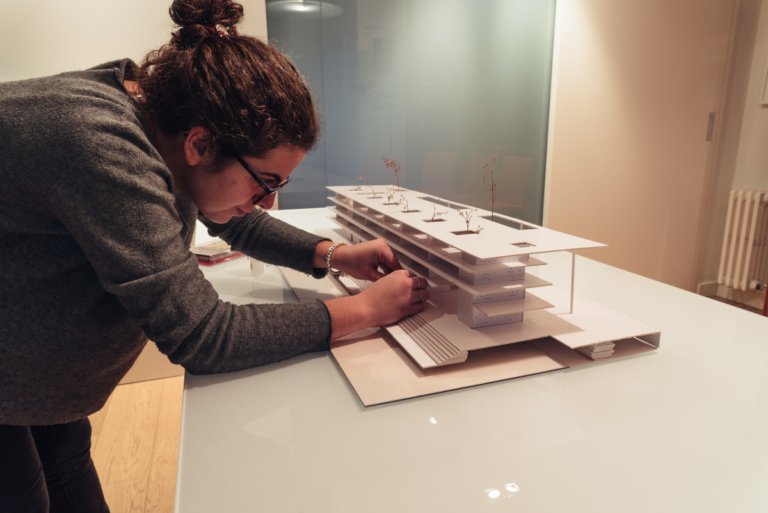
Social responsibility, a notion that in modern times became limited to the wider reaches of the pure at heart, has slowly seen a resurgence back into the limelight and finds itself again in general public discourse. Individuals, companies and organizations are no longer seeing themselves as islands, but as partners in a circle of civic responsibility encompassing the people around them.
In his wildly popular book, Happy City: Transforming Our Lives Through Urban Design, Charles Montgomery outlines how urban design and the emerging science of happiness are coming together to dynamically change how citizens benefit and interact with their surroundings.
“The places we build, they change the way we move,” Montgomery said.
“They change the way we feel. They change the way we treat other people, in ways that most of us don’t even imagine.”
They also have the power to change your lifespan, with studies indicating that those who live socially integrated lives can live up to 15 years longer than their isolated counterparts.
Forward-thinking, holistic 21st century architects aren’t just making buildings and houses, they’re building the infrastructure and foundations to make our lives happier and healthier, with easier mobility, connectivity, accessibility and room for social interactions.
Students looking for urban design inclusivity, courses focused on creating living sustainability, and ethical principles driving the ethos of institutions and their faculty might be interested in these future-facing architecture Masters programs:
Alvar Aalto, the godfather of modern Finnish architecture, once said: “Architecture and its details are in some way all part of biology,” like a salmon born upstream needing to travel hundreds of miles, there’s a journey we take before getting to a crystalized idea.
At the world’s northern-most architectural design school, their ethos isn’t just focused on being environmentally adaptable, inventive and steeped in Finland’s own concept of sisu (resilience), it also teaches its students about social responsibility, creating smart cities, and how to be conscientious architects for a better world.
“The teachers here are all very respectful people,” said Master’s student Albanor Krasniqi, from Kosovo.
“Our school is quite small, every class has only 30-40 people. We’re like family here,” he describes.
Oulu’s programme is a two-year long Masters course, with students having previously undertaken topics that include adaptive urban lighting, building sustainable winter cities, and urban planning for good health in cold climates. Using its cold Nordic climate as a backdrop, students are tasked with incorporating environmental light into their design, collaborating in projects with a host of multi-cultural classmates, in an international and holistic-minded setting.
UNIVERSITY OF BATH – UNITED KINGDOM
Students starting their first year at the University of Bath’s MA in Architecture will dive right into the practical side of the course, with a semester-long placement at an architectural practice.
Getting hands-on experience, combined with the department’s philosophical tradition of critical rationalism, students are expected to not just design, but to create a discourse with their environment, critiquing and analysing as they go along.
Combining practical work and classroom theory, fledgling architects learn as much about principles as they do with everyday management. Moving into their second year, students explore specific areas of interest to them in studio and group work, focusing on sustainable building and urban design solutions, and eventually getting tasked with picking a city of their choice and fulfilling a design brief.
Humanist principles provide the foundation at Politecnico di Milano’s Architecture and Urban Design Masters programme, at Italy’s largest polytechnical institution, where their coursework marries theory, art and design. MA students are encouraged to tap into their own innovation when looking for pragmatic solutions to urban design and traditional housing, applying building techniques grounded in environmental sustainability.
Boasting of illustrious alumni that includes Vittorio Gregotti, the world-renown architect who redesigned Barcelona’s Montjuic Stadium for the 1992 Olympics, the course includes some his guiding principles, including architectural preservation and the history of contemporary architecture.
Adapting design and solutions to sundry spaces, students are encouraged to tackle and solve complex problems with the professional responsibility they owe to the world around them.
LUCERNE UNIVERSITY OF APPLIED SCIENCES AND ARTS – SWITZERLAND
Set against the beautiful backdrop of Switzerland’s picturesque Medieval city of Lucerne, nestled between the Swiss Alps and the glistening lake sharing its namesake, Lucerne UAS teaches Masters students from around the world how to navigate the increasingly nebulous world of technology and context.
Design courses focus on four main areas: structure, energy, material and the practical implementation of these elements. With classes taught in both English and German, students have the option of spending a third semester abroad at a partner university. At Lucerne UAS, would-be architects are encouraged to mix theory and research in a dynamic setting.
*Some of the institutions featured on this article are commercial partners of Study International
Liked this? Then you’ll love…
Making+Meaning: Spark creativity with a crash course in architecture and design
TJU: Master’s degrees for a sustainable future in architecture & the built environment







